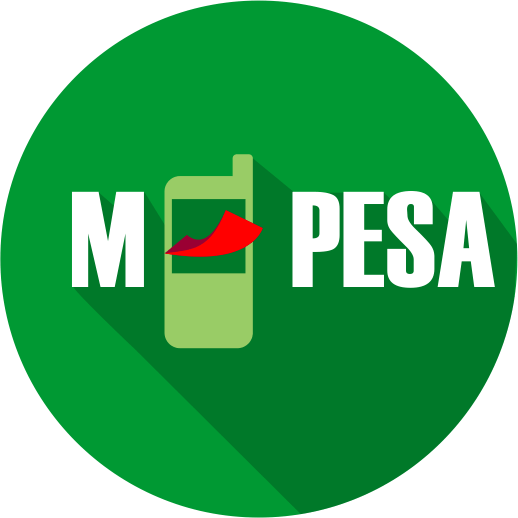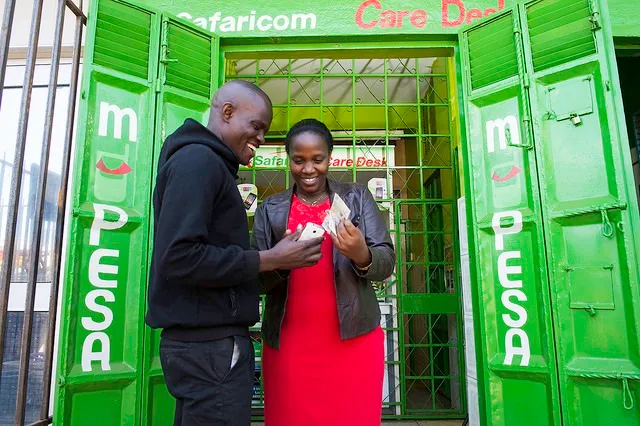When it comes to development, America, Asia, Australia, and other continents are far ahead of Africa. Currently, Africa is in its developing stage and M-PESA is playing a big role in Africa’s development. M-PESA is an amazing platform that allows the people of Kenya to send and receive money electronically. Moreover, it also allows people to store their money in electronic form.
The main aim of M-PESA is to provide a simple, accessible, and affordable way for people to access financial services, particularly those who do not have access to traditional banking services. M-PESA was developed in response to the need for a reliable and secure way to transfer money in Kenya, where many people did not have bank accounts or access to formal financial services. In this article, we are going to tell you about M-PESA and its effect on the people of Kenya.
What is M-PESA?

M-PESA is a mobile payment and money transfer service that was first launched in Kenya in 2007 by Safaricom, the largest mobile network operator in the country. It allows users to deposit, withdraw, and transfer money, pay bills, and purchase goods and services using their mobile phones.
The service has since been expanded to other countries, including Tanzania, Mozambique, Lesotho, Ghana, and India. M-PESA has had a significant impact on financial inclusion in East Africa, where many people previously lacked access to formal financial services.
M-PESA works by allowing users to deposit and withdraw money from their M-PESA accounts through a network of agents, who are typically small business owners located in their communities. Users can also transfer money to other M-PESA users or to bank accounts, and pay bills using the service. M-PESA transactions are secure and are authenticated using a PIN code that is only known to the user.
Impact of M-PESA on the Lives of People of Kenya

M-PESA has had a significant impact on the lives of people in Kenya since its launch in 2007. Here are some of the ways in which M-PESA has affected the lives of Kenyans:
1. Financial Inclusion
M-PESA has played a key role in increasing financial inclusion in Kenya by providing a simple, accessible, and affordable way for people to access financial services. It has enabled people who previously did not have access to formal financial services, such as bank accounts, to participate in the formal economy.
2. Increased Access to Healthcare
M-PESA has made it easier for people in remote and underserved areas to access healthcare by allowing them to pay for medical services and health insurance premiums using their mobile phones. This has been especially important in rural areas where there are few healthcare facilities.
3. Improved Business Transactions
M-PESA has made it easier for small business owners to conduct transactions, receive payments, and access credit. It has also reduced the risks associated with carrying cash and made it easier for businesses to manage their finances. All in all, M-PESA is very helpful when access to finance means the difference between life and death.
4. Reduced Crime
M-PESA has helped to reduce crime by reducing the amount of cash that people carry around. This has made people less vulnerable to theft and robbery. The impact of mission-based lending companies has been very positive in Kenya.
5. Empowerment of Women
M-PESA has empowered women by providing them with greater financial independence and control over their finances. It has enabled women to access financial services without having to rely on their spouses or other family members.
Overall, M-PESA has had a positive impact on the lives of people in Kenya by providing them with a simple and accessible way to access financial services and enabling them to participate more fully in the formal economy. Moreover, they also use new frontier in formal services honesty to promote a culture of transparency, accountability, and ethical decision-making throughout the organization.
What Financial Diaries Reveal About M PESA Use?
Financial diaries is basically a tool that is used to track how people use their money. It offers detailed insight into people’s earnings and expenses. As per financial diaries, M-PESA has a huge impact on the lives of people, especially in Kenya. Here are some of the things what financial diaries reveal about M PESA use.
1. M-Pesa is primarily used for small transactions: Financial diaries show that M-Pesa is most commonly used for small transactions, such as paying for groceries or sending money to friends and family.
2. M-Pesa is used as a savings tool: Many users of M-Pesa use the platform as a savings tool, by depositing money into their M-Pesa accounts and withdrawing it later when they need it. This is often done to avoid the temptation to spend money on unnecessary purchases.
3. M-Pesa is used to manage cash flow: Financial diaries also show that M-Pesa is used to manage cash flow, particularly by people who have irregular or unpredictable income. M-Pesa allows people to store and transfer money without the need for physical cash, which can be particularly helpful for those who work in the informal sector.
4. M-Pesa is used for emergencies: Financial diaries also reveal that M-Pesa is often used for emergencies, such as unexpected medical expenses or car repairs. In these situations, M-Pesa can provide a quick and convenient way to access funds.
All in all, financial diaries have shown that M-Pesa is an important financial tool for many people, particularly those who have limited access to traditional banking services. By providing a secure and convenient way to store and transfer money, M-Pesa has helped to improve financial inclusion and empower individuals and households to manage their finances more effectively.
Whether M-PESA is Able to Achieve its Aim in Kenya?
The aim of M-PESA is to enable people to send and receive money, pay bills, and purchase goods and services using their mobile phones, without the need for a bank account or other formal financial institution. By doing so, M-PESA aims to increase financial inclusion and empower people to participate more fully in the formal economy.
M-PESA has been successful in achieving its aim, particularly in Kenya where it has had a significant impact on financial inclusion and has transformed the way people conduct transactions. The service has since been expanded to other countries, and its success has inspired the development of similar mobile money services in other parts of the world.
Frequently Asked Questions (FAQs)
Q1. What problem was M-PESA developed to solve?
M-PESA was developed to solve the problem of a lack of access to formal financial services in Kenya. Before the introduction of M-PESA in 2007, many Kenyans did not have access to banking services, particularly those in rural areas. This meant that people had to rely on cash transactions, which were often risky and expensive. M-PESA was developed as a way to provide a simple and accessible solution to this problem.
Q2. What is the M-PESA story?
The M-PESA story began in 2005 when Vodafone, the UK-based telecommunications company, approached Safaricom, the largest mobile network operator in Kenya, with the idea of creating a mobile money service. At the time, Kenya had a largely cash-based economy, and many people did not have access to formal banking services. Safaricom, in collaboration with Vodafone and other partners, began developing the M-PESA service, which was launched in Kenya in 2007.
M-PESA was an instant success, with over 1 million customers signing up within the first 6 months of its launch. The service quickly spread throughout Kenya, and by 2010, over 70% of Kenya’s adult population was using M-PESA.
The success of M-PESA in Kenya led to its expansion to other countries, including Tanzania, Mozambique, Lesotho, Ghana, and India. M-PESA has also received international recognition for its impact, winning several awards for its innovation and social impact, including the Financial Times Sustainable Banking Award in 2012 and the GSMA’s Best Mobile Money Service in 2015.
Today, M-PESA continues to be one of the most successful mobile money services in the world, with over 40 million active users across several countries.
Q3. How successful is M-PESA in Kenya?
M-PESA has been incredibly successful in Kenya since its launch in 2007. The service has had a significant impact on financial inclusion, empowering people who previously did not have access to formal financial services to participate more fully in the formal economy. As of 2021, M-PESA has over 29.5 million active users in Kenya, which is over 75% of the adult population. They also support DLA paper drafts legal framework to support financial inclusion aimed at promoting financial inclusion in developing countries.
Author Profile

- Jonas Taylor is a financial expert and experienced writer with a focus on finance news, accounting software, and related topics. He has a talent for explaining complex financial concepts in an accessible way and has published high-quality content in various publications. He is dedicated to delivering valuable information to readers, staying up-to-date with financial news and trends, and sharing his expertise with others.
Latest entries
 BlogOctober 30, 2023Exposing the Money Myth: Financing Real Estate Deals
BlogOctober 30, 2023Exposing the Money Myth: Financing Real Estate Deals BlogOctober 30, 2023Real Estate Success: Motivation
BlogOctober 30, 2023Real Estate Success: Motivation BlogOctober 28, 2023The Santa Claus Rally
BlogOctober 28, 2023The Santa Claus Rally BlogOctober 28, 2023Build Your Team – the Importance of Networking for Traders
BlogOctober 28, 2023Build Your Team – the Importance of Networking for Traders

